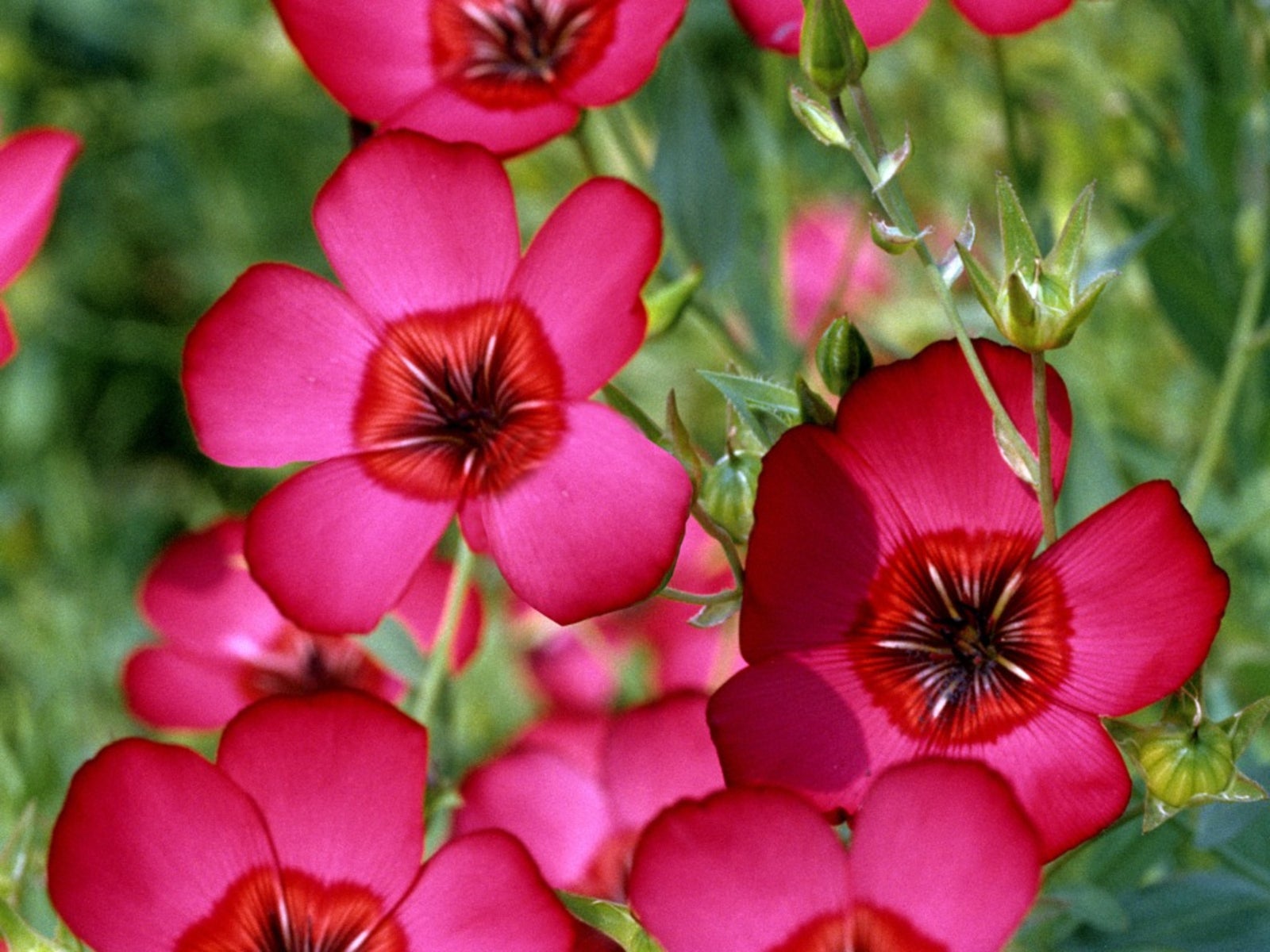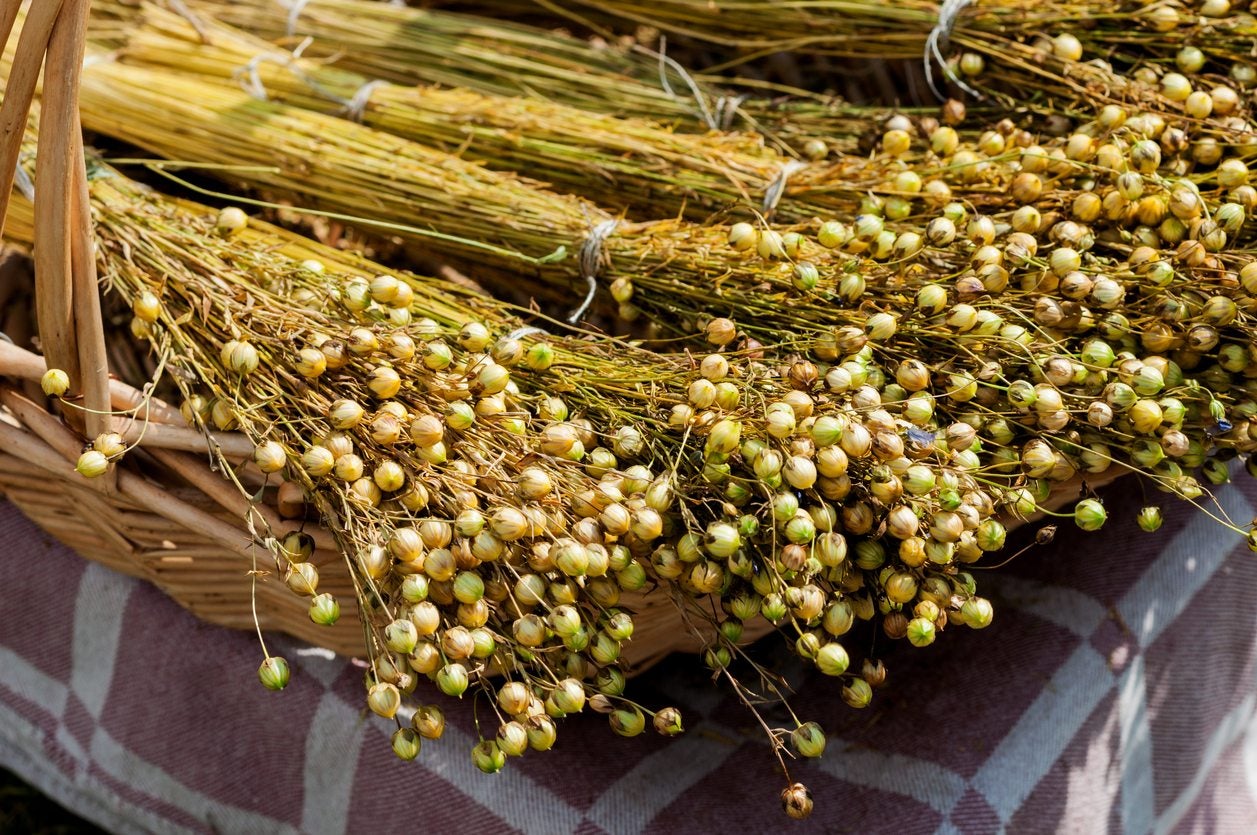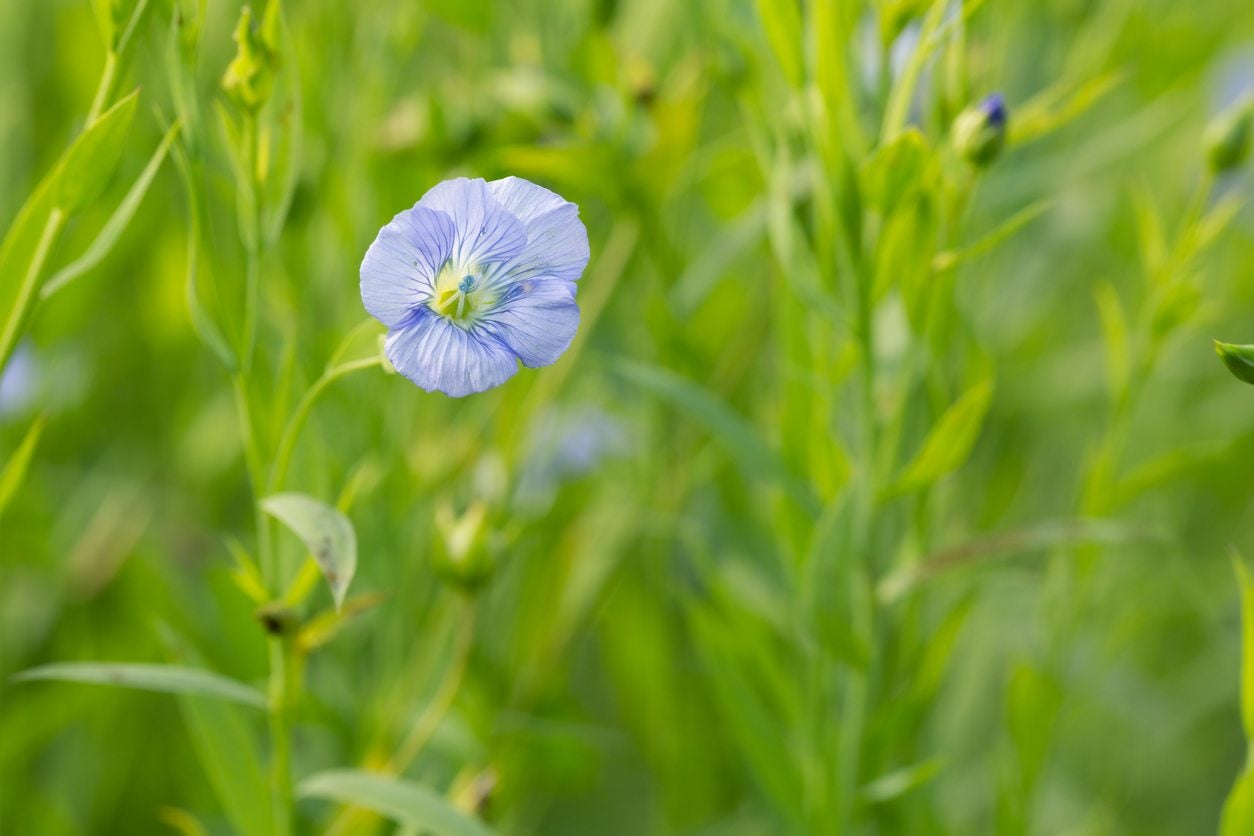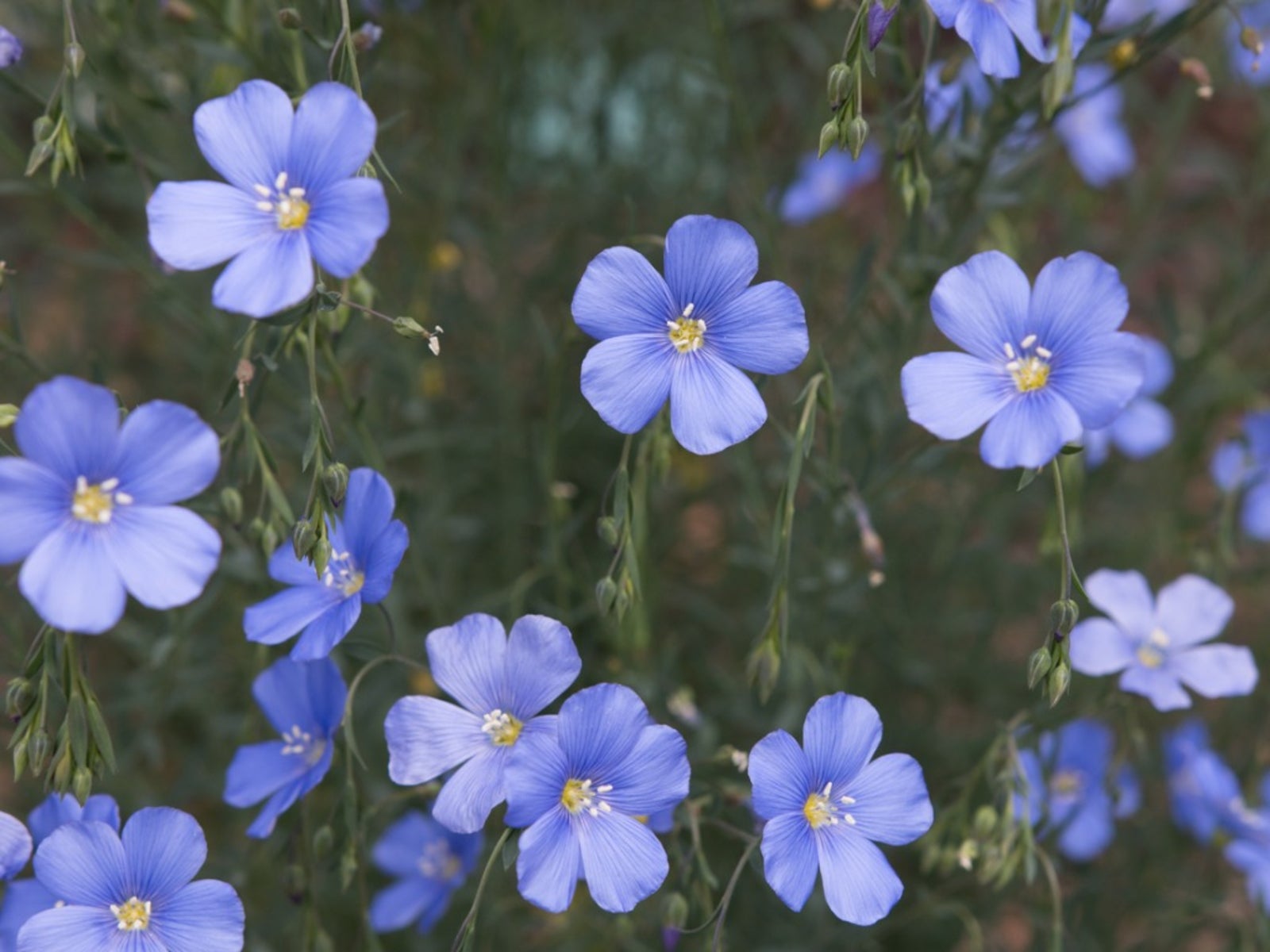Scarlet Flax Planting: Scarlet Flax Care And Growing Conditions

An interesting plant for the garden with a rich history, not to mention its vibrant red color, the scarlet flax wildflower is a great addition. Read on for more scarlet flax information.
Scarlet Flax Information
Scarlet flax wildflowers are hardy, annual, flowering herbs. This attractive flower has five scarlet petals and stamens that are covered in blue pollen. Each flower lasts only for a few hours, but continues to bloom throughout the day. Scarlet flax wildflowers grow from 1 to 2 feet (0.5 m.) and last about four to six weeks, between the months of April and September. The seeds of the scarlet flax are shiny because the oil content in them is quite high. Flax seeds produce linseed oil, which is used in baking and in bulk-forming laxatives. Linoleum, the inexpensive, durable floor covering from the 1950's, is also produced from linseed oil. Flax fiber, which is stronger than cotton, is taken from the skin of the stem. It is used for linen fabric, rope, and twine. These pretty flax plants are native to North Africa and southern Europe but are popular in USDA plant hardiness zones 3 through 10. Scarlet flax wildflowers love full sun and can tolerate extreme heat, but prefer cooler climates. Scarlet flax care is minimal and the flower is fairly easy to grow and maintain, which makes it a perfect plant for inexperienced gardeners. Many people use them as border plants or mixed in with a sunny wildflower or cottage garden.
Scarlet Flax Planting
Growing scarlet flax seeds in peat pots will make transplanting them into the garden much easier. Start them four to six weeks before your expected last frost date. Space young plants 4 to 6 inches (10 to 15 cm.) apart in a sunny section of your garden in the spring. You can also sow seeds directly into your garden. Prepare the soil by raking a 1/8-inch (0.5 cm.) deep layer of dirt, scatter the seeds, and press the soil down. Be sure to water thoroughly until the plants are established.
Gardening tips, videos, info and more delivered right to your inbox!
Sign up for the Gardening Know How newsletter today and receive a free copy of our e-book "How to Grow Delicious Tomatoes".
-
 Looking For Plants To Give You The Soft And Fuzzies? Try These 5 Fuzzy Leaf Plant Options
Looking For Plants To Give You The Soft And Fuzzies? Try These 5 Fuzzy Leaf Plant OptionsLovers of texture, drama, silver foliage and tactile plants will adore these special sensory garden additions. These fuzzy leaf plant options will leave you all aglow
By Susan Albert
-
 Get Ready For A Summer Of Hummers! Grow These Full Sun Hummingbird Plants and Flowers
Get Ready For A Summer Of Hummers! Grow These Full Sun Hummingbird Plants and FlowersIf you’re lucky enough to enjoy a sunny backyard, make sure you are maxing out on your pollinator opportunities and grow these full sun hummingbird plants and flowers
By Tonya Barnett
-
 Flaxseed Harvesting Time: Learn How To Harvest Flaxseed In Gardens
Flaxseed Harvesting Time: Learn How To Harvest Flaxseed In GardensCommercial flaxseed growers generally winnow the plants and allow them to dry in the field. For backyard flaxseed growers, harvesting flaxseed is a very different process usually done completely by hand. Click this article to learn how to harvest flaxseed.
By Mary H. Dyer
-
 What Is Flaxseed – Tips On Growing Your Own Flaxseed Plants
What Is Flaxseed – Tips On Growing Your Own Flaxseed PlantsFlax, one of the first crops domesticated by man, was used primarily for fiber. In recent years, we have become more aware of the plant's many benefits - the seeds. Growing your own flaxseed isn't difficult, and the beauty of the plant is an added bonus. Learn more here.
By Mary H. Dyer
-
 Growing Flax: Tips For Flax Plant Care
Growing Flax: Tips For Flax Plant CareThe blue flax flower is a beautiful wildflower that packs quite a punch in the garden. Learn how to grow flax in your garden by following the tips found in this article.
By Becca Badgett